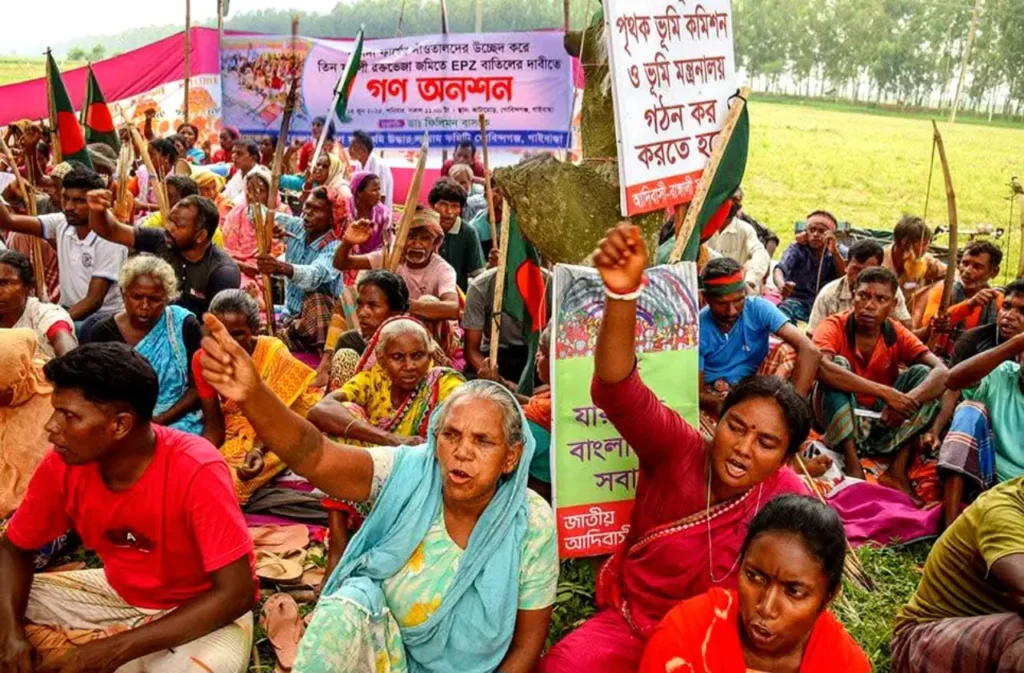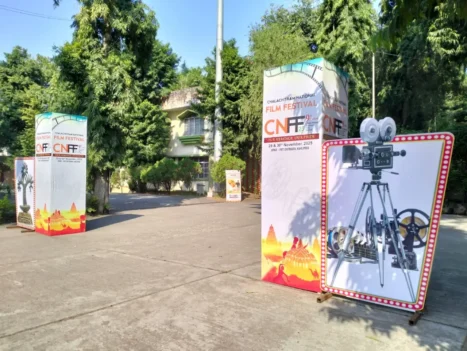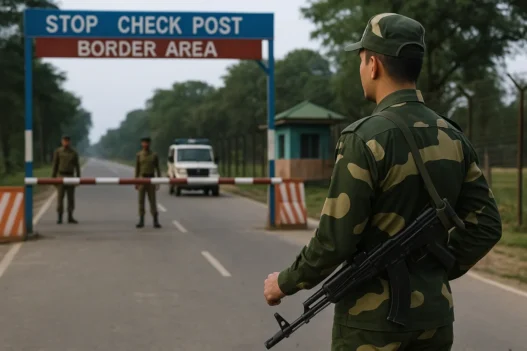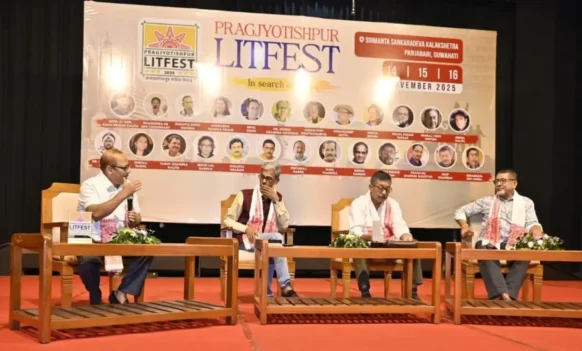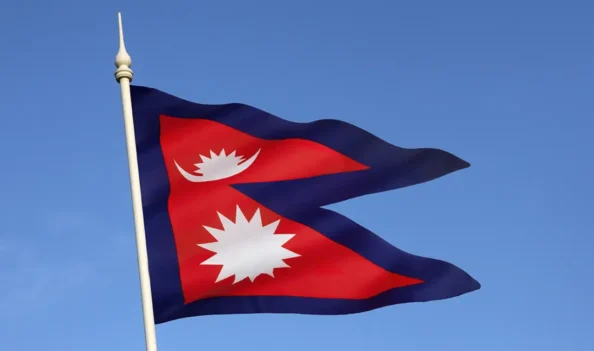Nearly nine years after three indigenous men were shot dead during a violent eviction, tensions have resurfaced in northern Bangladesh as Santal communities protest a proposed industrial project on land they claim as ancestral.
Dozens of indigenous villagers launched a hunger strike this week in Gaibandha’s Gobindaganj area, demanding the government immediately scrap plans to build an Export Processing Zone (EPZ) on land historically cultivated by their families.
The protesters say the 1,842-acre plot—originally seized for sugar production during Pakistan’s rule—should have been returned to the community after the Rangpur Sugar Mill ceased operations in 2004.
“The land was taken from our forefathers under the promise of public use,” said Rupen Murmu, a local community leader.
“Now that the mill is closed, the government must return what is rightfully ours.”
The protest has revived memories of a deadly confrontation in November 2016, when police and sugar mill workers clashed with Santal villagers attempting to harvest sugarcane from the disputed site.
Three indigenous men were killed, dozens injured, and more than 2,000 people displaced after their homes were set ablaze. No one has been held accountable for the incident.
Local leaders say they are not opposed to development but object to industrialisation that displaces Indigenous communities and threatens agricultural livelihoods.
“This is not anti-industry,” said Swapan Murmu, another local.
“It’s about justice, food security, and the survival of our identity. Why build a factory on farmland soaked in history and blood when other vacant government plots are available?”
The contested land, known as the Sahebganj-Bagda Farm, remains under the management of Rangpur Sugar Mill, now defunct.
The current interim government, led by Dr. Md. Yunus, has expressed renewed interest in establishing an EPZ on the site, reigniting longstanding grievances.
Activists and legal experts warn that the situation reflects broader concerns about indigenous land rights in Bangladesh, where state-led development often overrides consent and consultation.
“There has been a conspicuous absence of transparent environmental and social impact assessments preceding this project’s advancement,” said a local Indigenous leader who requested anonymity.
“The fundamental principle of free, prior, and informed consent is being flagrantly disregarded.”
The protesters demands, including the cancellation of the EPZ plan, restitution of land to Santal families, and a judicial inquiry into the 2016 violence.
They also called for financial compensation for the victims’ families and long-term protection of agricultural zones in the area.
Government officials have yet to respond publicly.
Attempts to reach representatives from the Bangladesh Export Processing Zones Authority (BEPZA) and local administration for comment were unsuccessful.
The genesis of this dispute dates back to 1962, when the Pakistani government forcibly displaced approximately 22,500 families from 21 villages to establish a cane farm for the sugar mill.
The evicted communities subsequently dispersed across various regions of the country.
The original 1962 agreement between Pakistan’s central and provincial governments explicitly included a provision that the 1,842 acres would be restituted to the rightful owners if the land’s use deviated from sugarcane production.
Despite the sugar mill ceasing operations in 2004, the land was illicitly leased to local politicians and affluent individuals.
Although some displaced families attempted to reclaim their ancestral land and constructed provisional shelters in July, they faced renewed eviction on November 6, 2016, underscoring the protracted nature of their dispossession.
The struggle for Sahebganj represents more than a dispute over territory; it embodies a critical challenge to entrenched historical injustices, state-sanctioned violence, and a development model that systematically marginalizes vulnerable communities in Bangladesh.
Source : The Chittagong Hill Tracts
Disclaimer : The views expressed in this article are those of the author and do not represent the stand of this publication.

